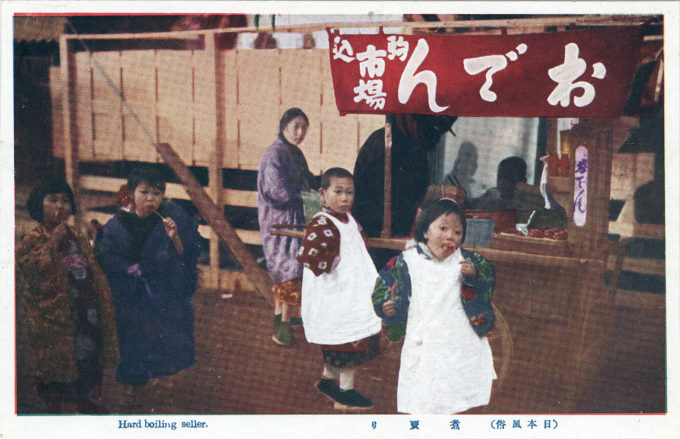
“Hard boiling seller”, oden street vendor, c. 1920. Oden is a Japanese “hot pot” or “fishcake stew” that is most enjoyed during the winter months but can be found year-round.
See also:
Soba culture, c. 1910.
“Eating with chopsticks”, c. 1910.
Public nutrition campaign, c. 1930.
“Oden is a type of nabemono (Japanese one-pot dishes, e.g. shabu-shabu, sukiyaki and chankonabe), consisting of several ingredients such as boiled eggs, daikon (Japanese radish), konnyaku (yam cake), and processed fishcakes stewed in a light, soy-flavored dashi (kombu or bonito) broth.
“Oden was originally what is now commonly called miso dengaku or simply dengaku; konnyaku or tofu was boiled and eaten with miso. Later, instead of using miso, ingredients were cooked in dashi, and oden became popular. Ingredients vary according to region and even between each household. Karashi, a type of mustard, is often used as a condiment.
“Oden is often sold from food carts, though nowadays some izakayas and several convenience store chains also serve it, and dedicated oden restaurants exist. Many different varieties are sold, with single-ingredient dishes sometimes as cheap as 100 yen. While it is usually considered a winter food, some carts and restaurants offer oden year-round.
“Many of these vendors and restaurants keep some broth as a master stock (as one would treat a sourdough bread ‘mother’), replenishing it as it simmers to let the flavor deepen and develop over many months and years.”
– Wikipedia

